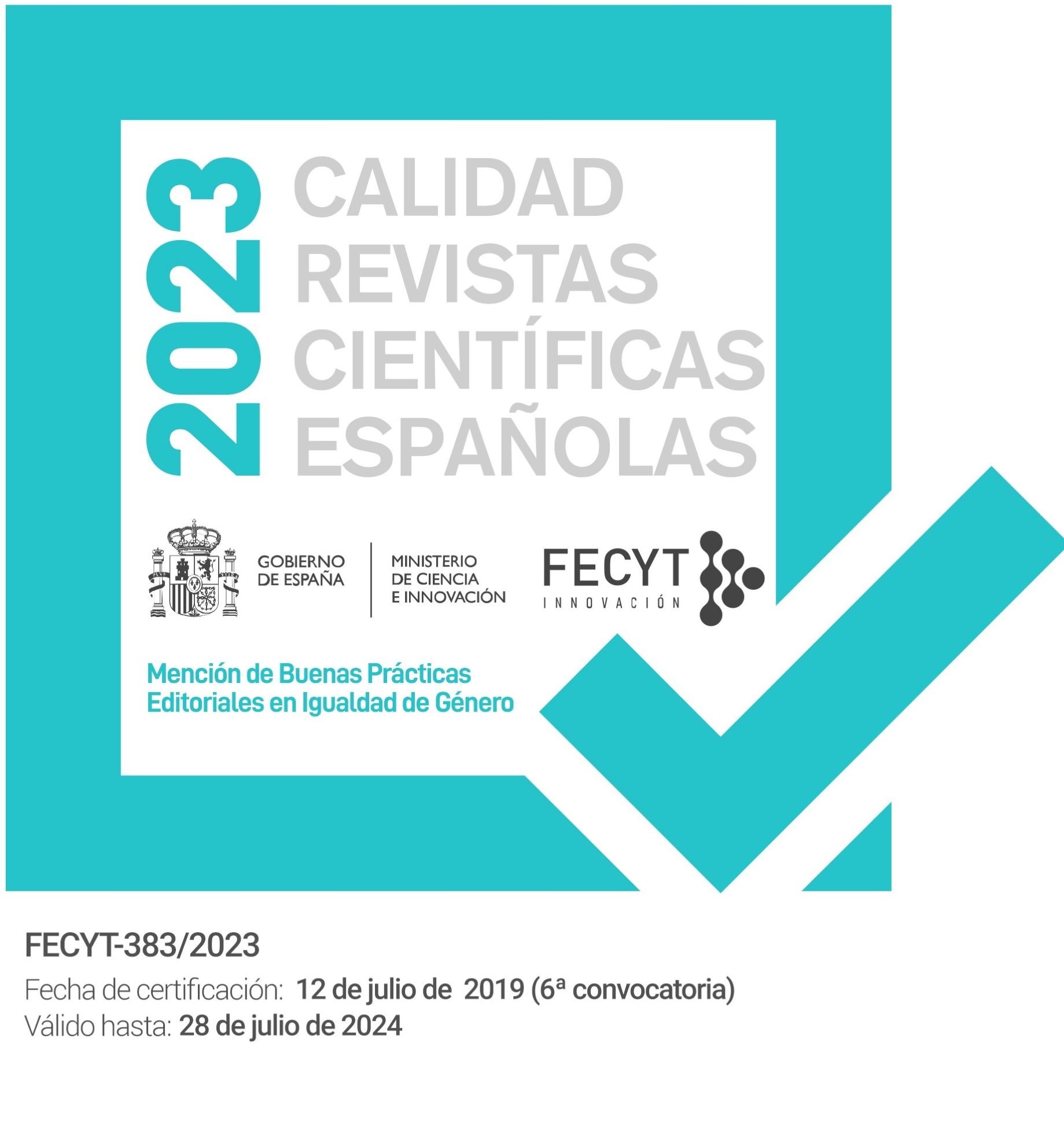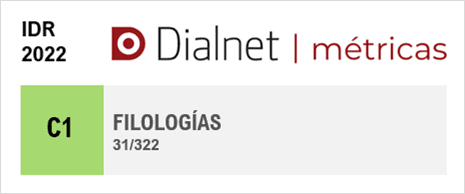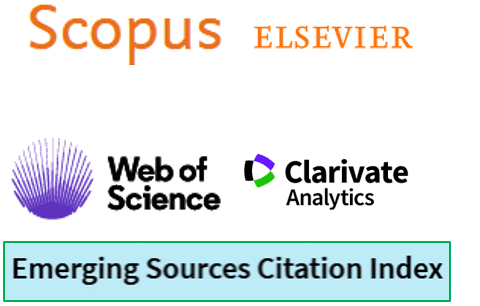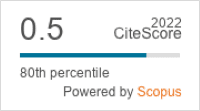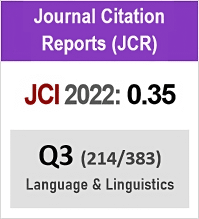Culture and Instruction in the Spanish Heritage Language Classroom
DOI:
https://doi.org/10.20420/PhilCan.2017.145Palabras clave:
evaluación, competencia cultural, conocimiento intracultural, conocimiento interculturalResumen
Como la competencia cultural es inherente a la adquisición de la lengua, debería jugar un papel central en los cursos de lengua de herencia, de modo que los aprendientes puedan establecer conexiones con su propia cultura y ser conscientes de la diversidad del mundo hispanohablante. Este artículo ofrece una visión panorámica de la instrucción y evaluación de la cultura para promover el pensamiento crítico y la reflexión, a fin de reducir los estereotipos y validar la herencia cultural de los aprendientes de lengua de herencia. Asimismo, se analiza el papel actual de los estudios en el extranjero y del aprendizaje-servicio para enseñar cultura en la clase de español como lengua de herencia.
Descargas
Citas
ALARCÓN, F. X. 1997. “El español para hispanohablantes: la cultura, ¿cómo se come?, o quítale las hojas al tamal”, en Colombi, M. C. and Alarcón, F. X. (eds.), La enseñanza del español a hispanohablantes: Praxis y teoría. Boston: Houghton Mifflin, 233-257.
ANDERSSON, L., PERSSON, M., and THAVENIUS, J. 1999. Skolan och de kulturella förändringarna. Lund: Studentlitteratur.
APARICIO, F. 1983. “Teaching Spanish to the Native Speaker at the College Level”, Hispania, 66(2), 232-239.
APARICIO, F. 1997. “La enseñanza del español para hispanohablantes y la pedagogía multicultural”, en Colombi, M. C. and Alarcón, F. X. (eds.), La enseñanza del español a hispanohablantes: Praxis y teoría. Boston: Houghton Mifflin, 222-232.
BANKS, J. 2004. “Approaches to Multicultural Curriculum Reform”, in Banks, J. and Banks, C. (eds.), Multicultural Education: Issues and Perspectives. San Francisco, CA: Jossey-Bass, 242-264.
BEAUDRIE, S. 2012. “Common Core State Standards and Heritage Language Education: How Do They Match?”, The NCLRC Language Resource, 15(15).
BEAUDRIE, S. and DUCAR, C. 2005. “Beginning Level University Heritage Programs: Creating a Space for All Heritage Language Learners”, Heritage Language Journal, 3(1), 1-26.
BEAUDRIE, S., DUCAR, C., and POTOWSKI, K. 2014. Heritage Language Teaching: Research and Practice. Columbus, OH: McGraw-Hill Education.
BEAUDRIE, S., DUCAR, C., and RELAÑO-PASTOR, A. M. 2009. “Curricular Perspectives in the Heritage Language Context: Assessing Culture and Identity”, Language, Culture and Curriculum, 22(2), 157-174.
CARRASCO, R. L. and RIEGELHAUPT, F. 2003. “META: A Model for the Continued Acquisition of Spanish by Spanish/English Bilinguals in the United States”, in Roca, A. and Colombi, M. C. (eds.), Mi lengua: Spanish as a Heritage Language in the United States. Washington, DC: Georgetown University Press, 170-197.
CARREIRA, M. 2004. “Seeking Explanatory Adequacy: A Dual Approach to Understanding the Term ‘Heritage Language Learner’”, Heritage Language Journal, 2(1), 1-25.
CARREIRA, M., and KAGAN, O. (2011). “The Results of the National Heritage Language Survey: Implications for Teaching, Curriculum Design, and Professional Development”, Foreign Language Annals, 44(1), 40-64.
CAZDEN, C. 1988. Classroom Discourse: The Language of Teaching and Learning. Portsmouth, NH: Heinemann.
CHOI, J. and YI, Y. 2012. “The Use and Role of Pop Culture in Heritage Language Learning: A Study of Advanced Learners of Korean”, Foreign Language Annals, 45(1), 110-129.
CORONADO, M. L. 1999. “La integración de lengua y cultura en los niveles avanzado y superior: reflexiones y actividades”, Carabela, 45, 93-106.
CULLEN, B. and SATO, K. 2000. “Practical Techniques for Teaching Culture in the EFL Classroom”, The Internet TESL Journal, 6 (12). Retrieved from http://iteslj.org/Techniques/Cullen-Culture.html.
DUARTE, E. A. 2014. “Spanish as a Heritage Language in the United States: An Overview”, Comunicación, cultura y política, 5(2), 32-52.
DUCAR, C. 2008. “Student Voices: The Missing Link in the Spanish Heritage Language Debate”, Foreign Language Annals, 41(3), 308-320.
EKIAKA NZAI, V., GÓMEZ, P., REYNA, C., and JEN, K. 2012. “Non-Native English Speaking Elementary ELL Teachers' Culturally Responsive Leadership Profile in an ESL Context”, Colombian Applied Linguistics Journal, 14(2), 88-108.
FAIRCLOUGH, M. and BELPOLITI, F. 2013. “Houston’s Hispanic Community: Understanding Culture through Research in the SHL Classroom”, 24th Conference on Spanish in the United States and 9th Conference on Spanish in Contact with Other Languages. McAllen, TX: University of Texas - Pan American.
FALTIS, C. 1990. “Spanish for Native Speakers: Freirian and Vygotskian Perspectives”, Foreign Language Annals, 2(2), 117-26.
FEUERVERGER, G. 1997. “On the Edges of the Map: A Study of Heritage Language Teachers in Toronto”, Teaching and Teacher Education, 13(1), 30-53.
GAGO, E. 2008. “Permeabilidad y asimilación de contenidos socioculturales: evaluación”, in Pastor Cesteros, S. and Roca Marín, S. (eds.), La evaluación en el aprendizaje y la enseñanza del español LE/L2: XVIII Congreso Internacional de la Asociación para la Enseñanza del Español como Lengua Extranjera (ASELE). Alicante: Secretariado de Publicaciones de la Universidad de Alicante, 263-269.
GAY, G. 2003. “Introduction: Planting Seeds to Harvest Fruits”, in Gay, G. (ed.), Becoming Multicultural Educators: Personal Journey Toward Professional Agency. San Francisco, CA: Jossey-Bass, 1-16.
GODINA, H. 2003. “Mesocentrism and Students of Mexican Background: A Community Intervention for Culturally Relevant Instruction”, Journal of Latinos and Education, 2(3), 141-157.
GONZÁLEZ, N., MOLL, L. C., and AMANTI, C. 2005. Funds of Knowledge: Theorizing Practices in Households, Communities, and Classrooms. Mahwah, NJ: Lawrence Erlbaum.
GRAY, A. 2003. “Conversations with Transformative Encounters”, in Gay, G. (ed.), Becoming Multicultural Educators: Personal Journey Toward Professional Agency. San Francisco, CA: Jossey-Bass, 67-90.
GUY, T. 1999. “Culture as Context for Adult Education: The Need for Culturally Relevant Adult Education”, in Guy, T. (ed.), Providing Culturally Relevant Adult Education: A Challenge for the Twenty-First Century. San Francisco, CA: Jossey-Bass, 5-18.
HUNTER, T. 2011. “Responding to Cultural and Linguistic Diversity in New Zealand: A Ministry of Education Project”, Language, Education and Diversity Conference. Auckland, New Zealand.
KAGAN, O. and DILLON, K. 2001. “A New Perspective on Teaching Russian: Focus on the Heritage Learner”, Slavic and East European Journal, 45, 507-518.
KAGAN, O. and DILLON, K. 2009. “The Professional Development of Teachers of Heritage Learners: A Matrix”, in Anderson, M. and Lazaraton, A. (eds.), Building Contexts, Making Connections: Selected Papers from the Fifth International Conference on Language Teacher Education. Minneapolis, MN: Center for Advanced Research on Language Acquisition, 155-175.
KNUTSON. E. 2006. “Cross-Cultural Awareness for Second/Foreign Language Learners”, The Canadian Modern Language Review, 62(4), 591-610.
LADSON-BILLINGS, G. 1995. “But That’s Just Good Teaching! The Case for Culturally Relevant Pedagogy”, Theory Into Practice, 34(3), 159-165.
LEEMAN, J. 2015. “Heritage Language Education and Identity in the United States”, Annual Review of Applied Linguistics, 35, 100-119.
LEEMAN, J. and MARTINEZ, G. 2007. “From Identity to Commodity: Ideologies of Spanish in Heritage Language Textbooks”, Critical Inquiry in Language Studies, 4, 35-65.
LEEMAN, J., RABIN, L., and ROMÁN-MENDOZA, E. 2011a. “Critical Pedagogy Beyond the Classroom Walls: Community Service-learning and Spanish Heritage Language Education”, Heritage Language Journal, 8(3), 1-22.
LEEMAN, J., RABIN, L., and ROMÁN-MENDOZA, E. 2011b. “Identity and Activism in Heritage Language Education”, Modern Language Journal, 95(4), 481-495.
LOWTHER PEREIRA, K. 2015. “Developing Critical Language Awareness via Service-learning for Spanish Heritage Speakers”, Heritage Language Journal, 12(2), 159-185.
MARTÍNEZ, G. and SCHWARTZ, A. 2012. "Elevating ‘Low’ Language for High Stakes: A Case for Critical, Community-Based Learning in a Medical Spanish for Heritage Learners Program”, Heritage Language Journal, 9(2), 37-49.
MCGINNIS, E. I. and PALOS, A. L. 2011. Precious Knowledge [Motion picture]. United States: Dos Vatos Films.
MCINTOSH, P. 2000. “Interactive Phases of Personal and Curricular Revision with Regard to Race”, in Shin, G. and Gorski, P. (eds.), Multicultural Resource Series: Professional Development for Educators. Washington DC: National Education Association.
MENARD-WARWICK, J. 2009. Gendered Identities and Immigrant Language Learning. Buffalo, NY: Multilingual Matters.
MORAN, P. R. 2001. Teaching Culture: Perspectives in Practice. Boston: Heinle & Heinle, Thomson Learning.
MORRIS, R. C. and MIMS, N. G. 2012. “Making Classrooms Culturally Sensitive”, Education & Culture, 16(1), 29-32.
NODDINGS, N. 1999. “Two Concepts of Caring”, Philosophy of Education. Retrieved from http://www.ed.uiuc.edu/EPS/PES-yearbook/1999/noddings.asp.
OH, J. S. and AU, T. K. 2005. “Learning Spanish as a Heritage Language: The Role of Sociocultural Background Variables”, Language, Culture and Curriculum, 18(3), 229-241.
PAK. C. 2016. “Linking Service-learning with Sense of Belonging: A Culturally Relevant Pedagogy for Heritage Students of Spanish”, Journal of Hispanic Higher Education, 1, 1-20.
PARRA, M. L. 2013. “Expanding Language and Cultural Competence in Advanced Heritage- and Foreign-Language Learners through Community Engagement and Work with the Arts”, Heritage Language Journal, 10(2), 253-280.
PÉREZ PÉREZ, N. 2012. Análisis del contenido cultural en libros de texto de español como lengua extranjera destinados a estudiantes portugueses. PhD thesis. Oporto: Universidade do Porto.
PETERSON, E. and COLTRANE, B. 2003. “Culture in Second Language Teaching”, CAL Digest, 3(9), 1-6.
PETROV, L. A. 2013. “A Pilot Study of Service-learning in a Spanish Heritage Speaker Course: Community Engagement, Identity and Language in the Chicago Area”, Hispania, 96(2), 310-327.
PORCHER, L. 1986. La Civilisation. Paris: Clé International.
POTOWSKI, K. and CARREIRA, M. 2004. “Teacher Development and National Standards for Spanish as a Heritage Language”, Foreign Language Annals, 37(3), 427-437.
ROCA, A. 2007. “Intermediate-level Spanish as a Heritage Language: Issues in Developing Literacy”, AP Spanish Language. Special Focus: Teaching Writing, 142-154.
RODRÍGUEZ PINO, C. 1997. “Teaching Spanish to Native Speakers: A New Perspective in the 1990s”, The ERIC/CLL News Bulletin, 21(1), 4-5.
ROSS, A. and CHARITOS, S. 2012. Hispanidades/Hispanicities: Modelling Micro-collaboration Across Institutions in Support of Student Learning and Research”, Proceedings from The 52nd Annual National Conference of the Japan Association for Language Education and Technology.
RUBIN, K. 2004. “Going Home to Study”, International Educator, 13(1), 26-33.
SAMANIEGO, F. and PINO, C. 2000. “Frequently Asked Questions about SNS Programs”, in Webb, J. and Miller, B. (eds.), Teaching Heritage Language Learners: Voices from the Classroom. Yonkers, NY: ACTFL, 29-65.
SCHULZ, R. A. 2007. “The Challenge of Assessing Cultural Understanding in the Context of Foreign Language Instruction”, Foreign Language Annals, 40(1), 9-26.
SCHWARZER, D. and PETRÓN, M. 2005. “Heritage Language Instruction at the College Level: Reality and Possibilities”, Foreign Language Annals, 38(4), 568-578.
SMITH, B. 1997. “Virtual Realia”, The Internet TESL Journal, 3(7), 1-5.
STERN, G. 2004. “Inspiring Tales; AIC Course in Spanish for Native Speakers Stresses Culture”, The Hispanic Outlook in Higher Education, 14(23), 1-2.
TIJUNELIS, V., SATTERFIELD, T., and BENKÍ, J. R. 2013. “Linking Service-learning Opportunities and Domestic Immersion Experiences in US Latino Communities: A Case Study of the En nuestra lengua Project”, Hispania, 96(2), 264-282.
VALDÉS, G. 2000. “Introduction”, in Anderson, N. (ed.), AATSP Professional Development Series Handbook for Teachers K-16. Vol. 1: Spanish for Native Speakers. New York: Harcourt College, 1-20.
VILLA, D. J. 1996. “Choosing a ‘Standard’ Variety of Spanish for the Instruction of Native Spanish Speakers in the US”, Foreign Language Annals, 29(2), 191-200.
WEBB, J. and MILLER, B. 2000. Teaching Heritage Language Learners: Voices from the Classroom. Yonkers, NY: ACTFL.
ZIMMERMAN, N. S. 2009. “Creating Google Maps to Encourage Heritage Speakers to Consider their Cultural Heritage”, in Arries, J. (ed.), Language, Culture and Agency. Symposium Conducted at the 30th Annual Conference of Mid-Atlantic Council of Latin American Studies. Williamsburg, VA: The College of William and Mary.
ZIMMERMAN, N. S. 2011. Who Is the Self That Teaches? A Perspective of Faculty as They Learn to Teach Spanish as a Heritage Language. PhD thesis. The Pennsylvania State University.
Descargas
Publicado
Cómo citar
Número
Sección
Licencia
Derechos de autor 2017 Philologica Canariensia

Esta obra está bajo una licencia internacional Creative Commons Atribución-NoComercial-SinDerivadas 4.0.
![]()
Philologica Canariensia se distribuye bajo una licencia Creative Commons Reconocimiento–NoComercial–SinObraDerivada 4.0 Internacional.
Philologica Canariensia permite que los/las autores/as retengan los derechos de autoría sin restricciones y que los conserven en el futuro.
Al autor o la autora se le permite depositar en su página web personal, en un repositorio institucional o temático o en una red social el PDF final del editor. Los/las autores/as que publican en esta revista aceptan los siguientes términos:
- Los/las autores/ras conservarán sus derechos de autor y garantizarán a la revista el derecho de primera publicación de su obra, el cual estará simultáneamente sujeto a la Licencia de Reconocimiento de Creative Commons, que permite a terceros compartir la obra siempre que se indique su autor/a y su primera publicación en esta revista.
- Los/las autores/as podrán adoptar otros acuerdos de licencia no exclusiva de distribución de la versión de la obra publicada (por ejemplo, depositarla en un repositorio institucional o publicarla en un volumen monográfico) siempre que se indique la publicación inicial en esta revista.
- Se recomienda a los/las autores/as difundir su obra a través de Internet (por ejemplo, en repositorios institucionales y temáticos o en páginas web personales), lo cual puede aumentar las citas de la obra publicada (véase El efecto del acceso abierto).





.png)
